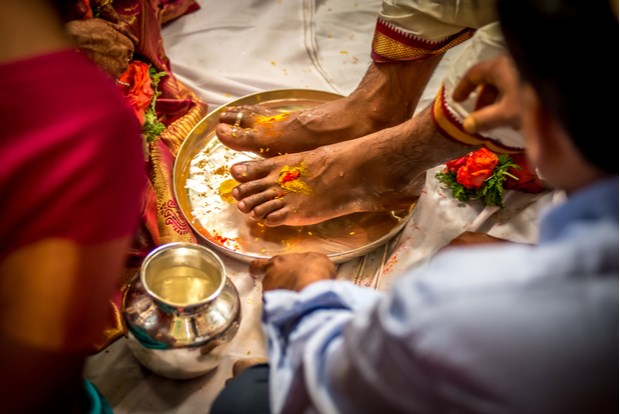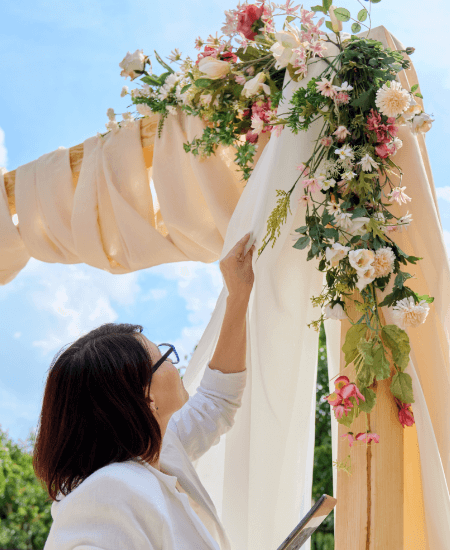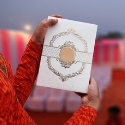Here Is What To Expect At A Telugu Wedding
Telugu weddings, also called the Teluginti Pelli, are famous for their traditional customs and rituals. In earlier days, the ceremonies used to last over 16 days. However, these days the ceremonies maybe anywhere between 3-5 days depending on the financial status of the families. These ceremonies have a close resemblance to the Tamil, Hindu wedding ceremonies. The food served at the weddings maybe vegetarian or non-vegetarian based on the regions.

Pre wedding ceremonies
Nischitartham: This ceremony is equivalent to the engagement ceremony with the wedding dates being officially announced. The families also exchange clothes, gifts and sweets to make the dates official.
Pellikuthuru: Similar to the Haldi ceremony conducted in the north Indian states, this ceremony is also held in the respective homes of the couples. The ritual includes smearing the bride’s and groom’s faces with oil and turmeric, followed by a purifying bath.
Snatakam: This is an auspicious ceremony held at the groom’s family. The groom takes a purifying bath following which he wears the holy silver thread to signify that he is ready for the marriage.
Kashi Yatra: This is a ritual where the groom pretends to leave to Kashi for a pilgrimage and claims to be not interested in the marriage. The bride’s father then stops the groom and asks him to marry his daughter.
Wedding Day
Mangala Snaanam: This is a purification bath that happens in the bride’s and groom’s homes respectively on the morning of the marriage.
Pooja: Before the wedding, the bride and the groom pray to Gauri and Ganesha respectively for blessings. In some communities the bride enters the venue in a traditional basket carried by her uncles.
Jeelakarra-Bellamu: The bride and groom sit across a curtain and the couple apply Jeera and Jaggery paste on each other across the curtain.
Kanyadaan: This is the auspicious ceremony where the bride’s father officially gives her daughter to the groom.
Mangalsutra Dharana: Once the curtain between them is slowly lowered, the groom ties the Mangalsutra around the bride’s neck, knotting it thrice to signify their strong bond in all aspects.
Saptapadi: The couple then walk around the holy fire while repeating the mantas chanted by the priest.
Sthaalipaakam: This is the final ceremony which solemnizes their wedding. The groom puts a silver toe ring on the bride second toes along with a necklace made of gold and black beads. After this ceremony, the bride becomes a part of the groom’s family leaving behind her own family.
Post wedding ceremonies
Griha Pravesh: The bride is welcomed into the groom’s family with a poojas and aarti. The bride steps into her new home with her right foot.






























Post a Comment